The Williamson’s Sapsuckers I photographed earlier this summer had a routine while they were feeding their chicks and I presume it went on all day long. While one of the parents was in the nest feeding ants to the youngsters, enlarging the nest chamber and picking up fecal pellets the other adult was out foraging for ants to bring to the hungry brood. The bird inside the nest rarely left before the other parent arrived so I often tried to photograph the “changing of the guard” and include both adults in the photograph. And often a feisty pair of wrens made the exchange more complicated.
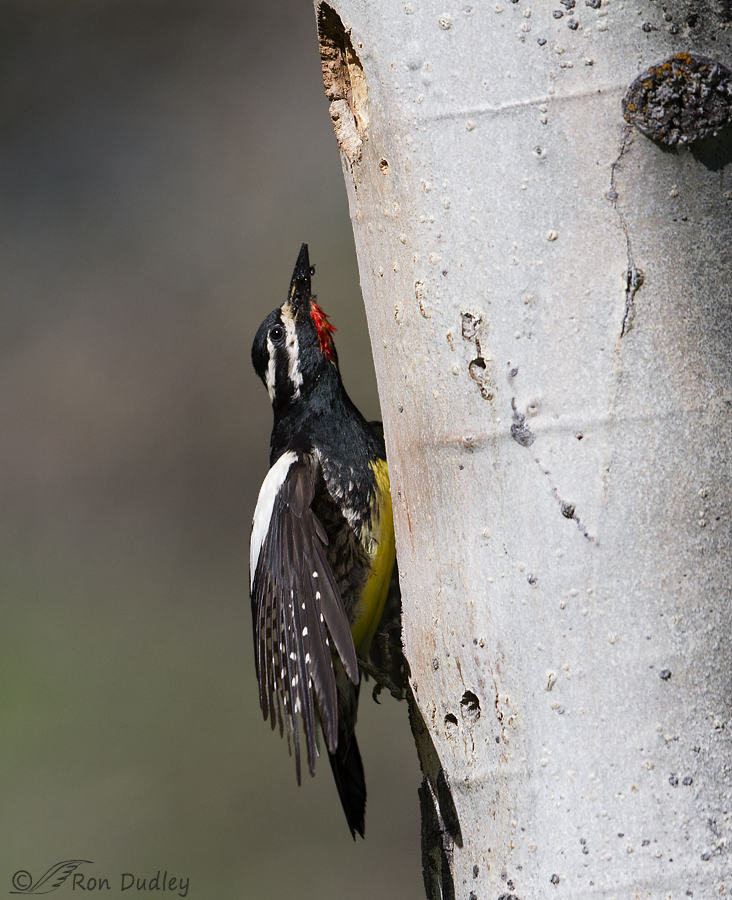
1/3200. f/5, ISO 640, Canon 7D, Canon EF500mm f/4L IS II USM, not baited, set up or called in
Here the male, with a few ants in his bill for the chicks, had landed just below the nest entrance and is half running, half flying straight up toward the hole. Over several mornings spent photographing these birds I noticed that the female nearly always carried significantly more ants than the male did – an observation I can’t explain. When this shot was taken the female was already in the nest.
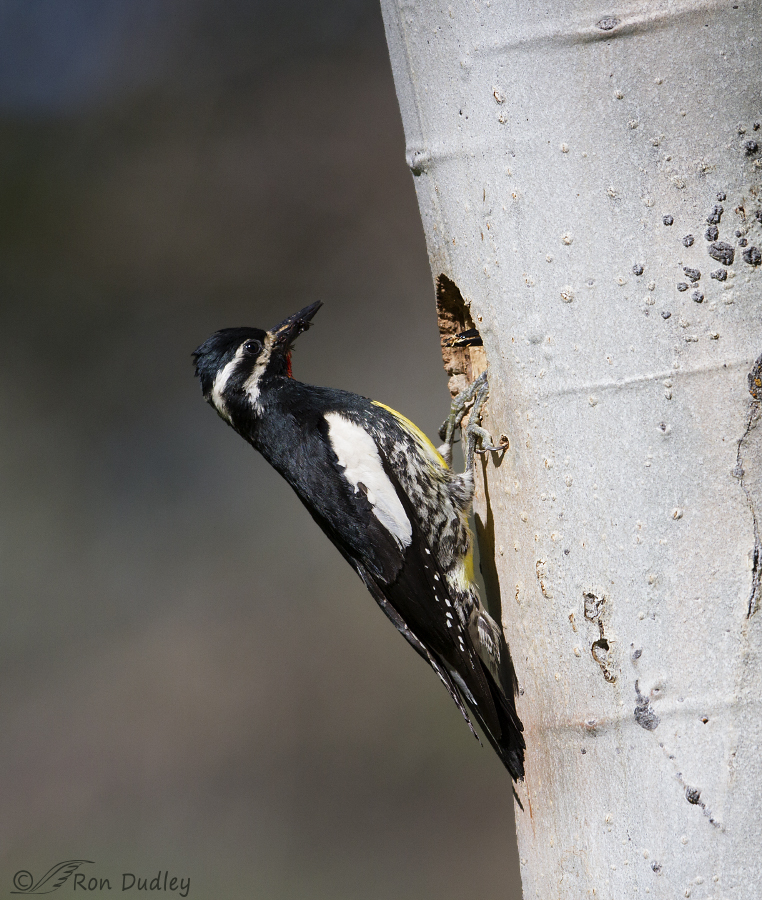
1/4000. f/5, ISO 640, Canon 7D, Canon EF500mm f/4L IS II USM, not baited, set up or called in
Almost immediately after one parent arrived at the nest entrance the other one would exit. Here you can see the bill-tip of the female as she prepares to leave.
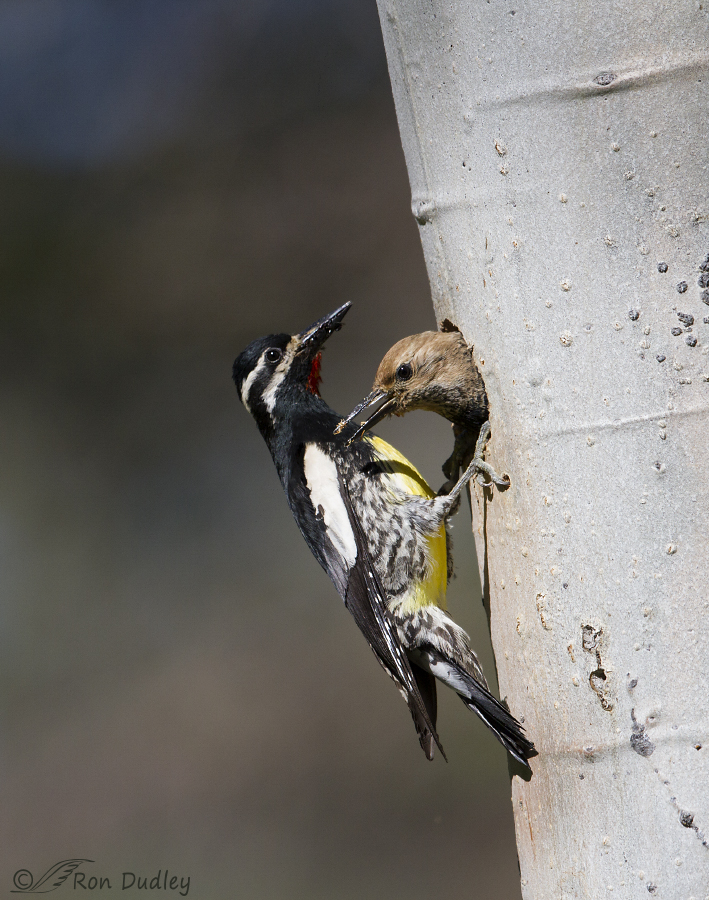
1/4000. f/5. ISO 640, Canon 7D, Canon EF500mm f/4L IS II USM, not baited, set up or called in
Both birds had the habit (a serendipitous one for this photographer) of leaning to their left to make room for the explosive exit of their mate. If they had leaned the other way one of the birds would have been more obstructed by the other. In this shot the female has wood chips stuck to her bill from enlarging the nest chamber.
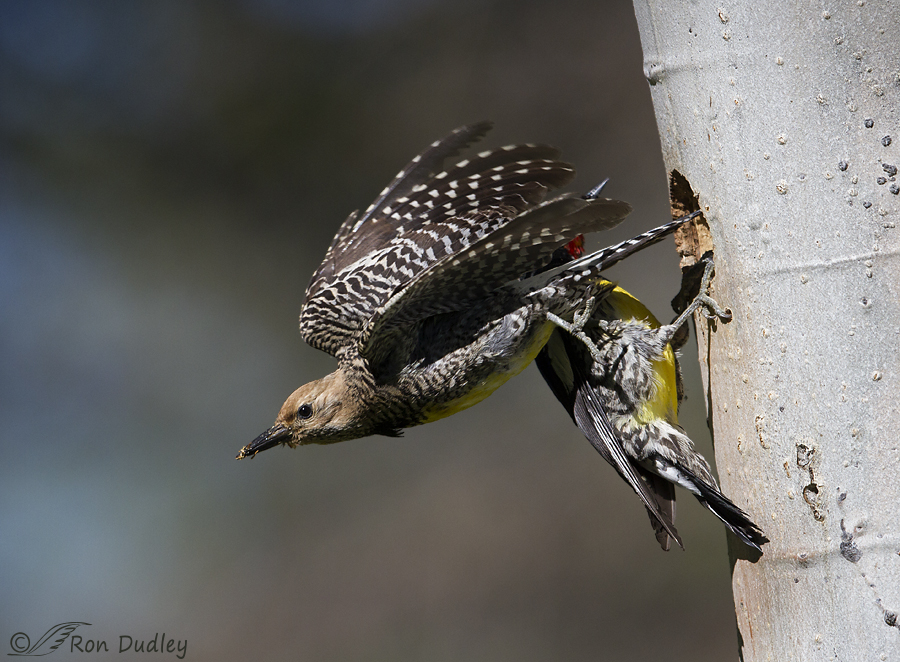
1/4000. f/5. ISO 640, Canon 7D, Canon EF500mm f/4L IS II USM, not baited, set up or called in
Here you see why one bird has to duck when the other one leaves. I suspect both parents had been rudely slapped in the face by a wing and didn’t want to repeat the experience.
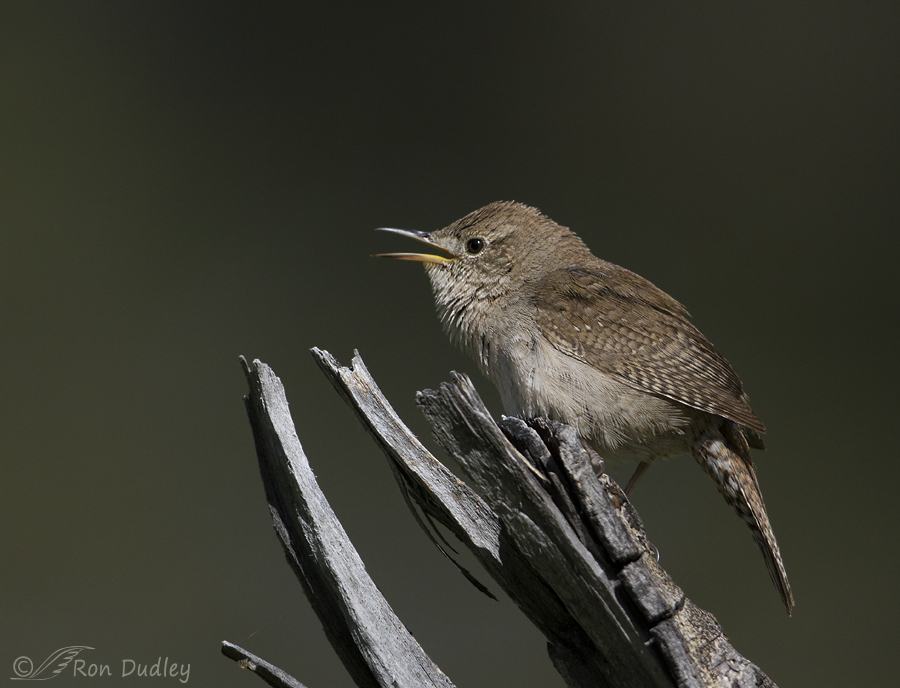
1/2500. f/6.3, ISO 500, Canon 7D, Canon EF500mm f/4L IS II USM, not baited, set up or called in
A pair of House Wrens with an attitude (I guess that’s a redundancy, isn’t it?) had their own nest hole several feet below the nest of the sapsuckers and those wrens would often harass the larger birds when they flew in.
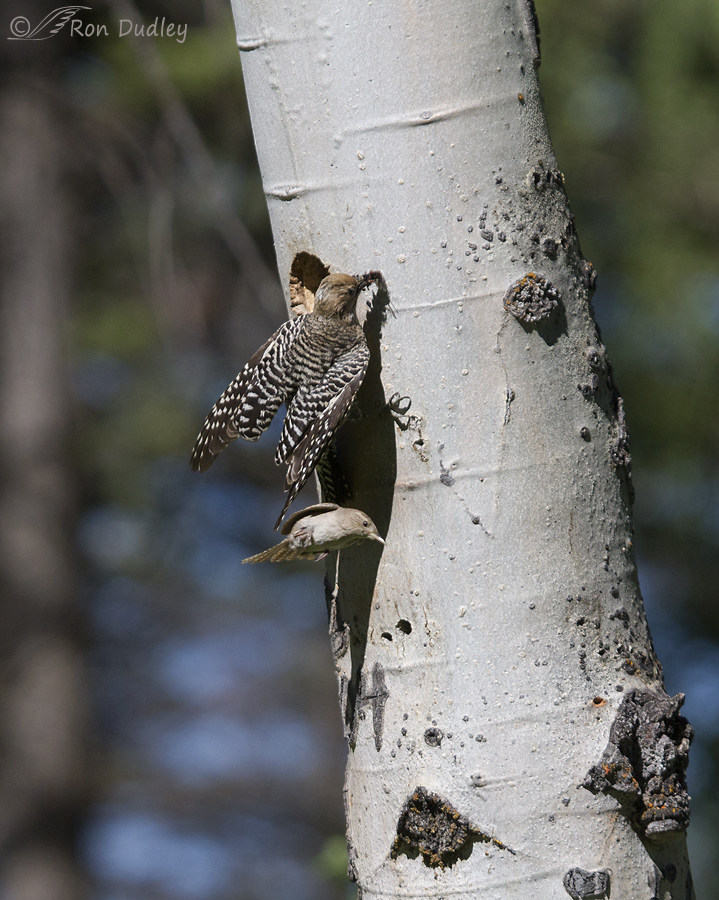
1/2500. f/6.3, ISO 500, Canon 7D, Canon EF100-400mm f/4.5-5.6L IS USM @ 235 mm, not baited, set up or called in
Here you see the female sapsucker with a bill full of ants reacting to an attack by one of the wrens. Those wrens were very fast and the attacks were difficult to photograph. The only reason I succeeded in this shot was because I noticed the reaction of the sapsucker as the wren approached, fired off a burst and got lucky.
On our last Montana trip we returned to this tree just over the border in Idaho hoping to see chicks as they fledged but we were too late. Even though the wrens were still there it seemed lonesome and quiet at the tree. Hopefully next summer we’ll find the sapsuckers again.
Ron


I love the WISA! Sexy birds! Great photos to boot!
What’s ironic is the nest cavity the Wrens were using was probably an old Sapsucker nest. How ungrateful can you be?

Very nice series of shots, Ron, showing the shift change.
Loved this series, and hope (probably as much as you do) that you get similar opportunities next year. I have a huge weakness for the little birds which ‘punch well above their weight’.
And now have an ear worm. Drat you Ron.
‘They are changing guards at Buckingham Palace,
Christopher Robin went there with Alice…’
Ear worms can be a pain in the (r)ear, can’t they, Elephant’s Child.
It’s not luck when you have good instincts. Great shots.
Great shots.
Thank you, Arwen.
These shots were done by a person with a wonderful sense of timing; understanding to birds and patience. “Luck” is a small part of the equation. Thanks for some great shots!
It may be a small part but sometimes it’s a very important part, Karen. But I do find that the more time I spend in the field the more of it I have. Thanks very much.
I notice some smaller round holes below the nesting cavity…practice holes? Rejects?
There were quite a few of those little holes, Patty. I suspect the sapsuckers started in those spots and changed their minds for some reason.
Little birds, little dogs, little equines ( esp. ponies), “little” people (with little minds), all seem to have “attitude”….curious, isn’t it….
Astute observation, Patty.
When it comes to wrens and chickadees I think what you have is big birds in little bodies. Or maybe little creatures with grandiose ideation?
A wonderful series of photos. I’m fairly certain that the wrens saw the sapsuckers as threats to their nest because the two nests were so close together. I’m also willing to bet that the sapsuckers were there first… I will never forget being given what-for by a chickadee (with food in its mouth) who was upset about me being on my deck because I was too close to the nest box I had put up there. I think it didn’t want me to see where it was taking the food, so its babies would be safe. t still marvel at how that tiny bird was willing to stand up to a large human. It did win the confrontation.
I’m sure you’re right, Susan. I remember thinking often that the wrens weren’t properly grateful to the sapsuckers who had probably excavated the wren nest in the first place.
What an unusual angle for that wren in the final shot – congratulations on your quick timing!
Luck, Alison. That shot was mostly luck.
Sensational amazing shots Ron! Such great talent you have. Thanks for sharing!
Charlotte
Thank you, Charlotte.